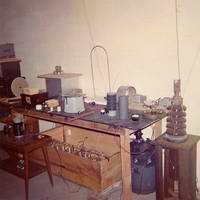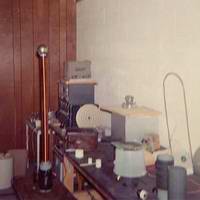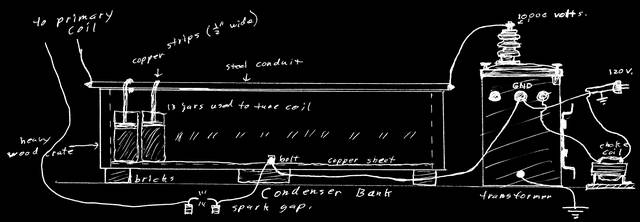|
The larger coil was built in the summer of 1971. The power source was a 10 kilovolt line
transformer donated by the Rural Electric Co-Op. The capaciter bank contained leyden jars
made with quart jars covered with aluminum foil and filled with salt water. These rested on
a copper sheet in a box, and wires hung from an over-head rail into the salt water. Remarkably,
only one of these jars ever exploded. The primary circuit ran through 000-gauge aluminum wire.
We experimented with a number of quenched spark gaps: rotary, series and air-quenched. The
final version was contained in an asbestos-lined box (for sound-proofing) and was
air-quenched by a vacuum cleaner blower (silver box in photo). The oscillator was so powerful
that it could boil a glass of water placed within the primary coil. The secondary
coil pictured to the right produced about an 18-inch arc.
We started out being very ignorant about Tesla coils, but by 1973, I was an expert in
pre-vacuum-tube electronics. We talked about building a Poulson Arc Oscillator, tone wheels,
coherers. We also learned a great deal about the work of Nikola Tesla around the turn of the
century.
|
|


|
